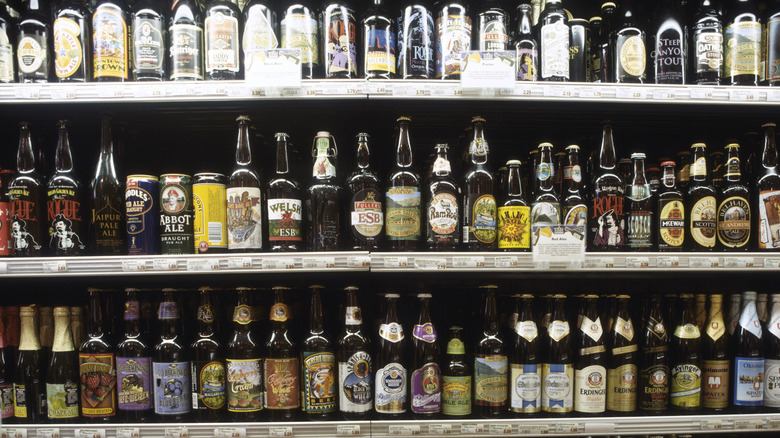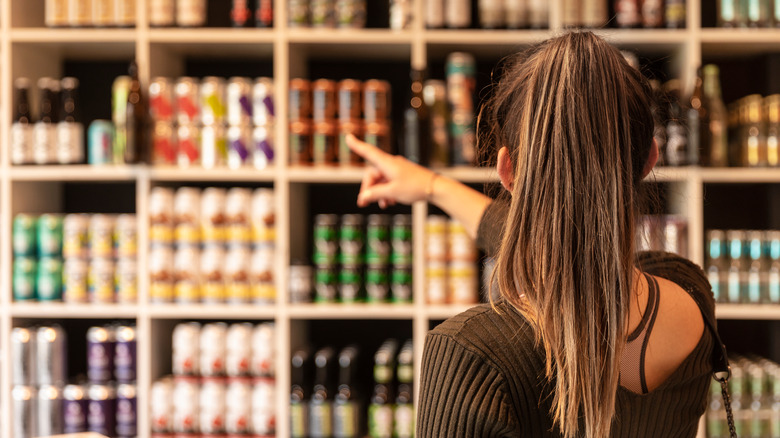The Biggest Pitfall With Mix-A-Six Beer Deals
Sometimes you're in the mood for a rich, chocolatey porter, but rarely is anyone in the mood for six of them all at once. Enter the mix-a-six, that golden supermarket or liquor store opportunity to create your own six-pack made up of virtually anything you want. It can be a great time to try out beers you haven't tested yet without committing to six to twelve of them or a way to sample some of those beers that you might want one or two of but maybe don't want a whole six-pack of, like heavy porters or seasonals like pumpkin beer (per Paste). One or two pumpkin beers is fun. Five or six pumpkin beers is nauseating. The you-pick-six is the perfect time to employ Gear Patrol's beer-buying tip of simply standing in front of the display and seeing what moves you.
Another plus of this buying option is that you can actually snag a deal. If the supermarket or liquor store is charging a flat rate for the you-pick packs, look for beers that are usually sold in fours to get the most for your money. These beers, which have a higher ABV, are ordinarily more expensive per unit.
This pick-your-own setup can seem like it has no downsides– you get exactly what you want and exactly as much of it as you want, and sometimes you even save a buck or two. But there are some caveats you need to watch out for even with this convenient and fun option.
Pick-your-own pitfalls
When you're shopping your you-pick-six, aka your fantasy six-pack, there's one big thing you want to pay attention to freshness (per Bon Appetit). These bottles are rarely refrigerated and have often been sitting around for an untold length of time. If you want to persist in making that pick-six purchase, there are a few things you can do to make sure you're getting the best possible six-pack.
If you're picking your own at the grocery store in particular, stay away from the more unusual options. Save your sampling of really weird stuff for the liquor store or bottle shop, as more unusual beers can sit around at the grocery store.
Whatever beer you choose, check the date. It may not be as straightforward as "best by" or "bottled on", however, warns Gear Patrol. If you pull a bottle stamped with a three-digit code, this is called a Julian code, and it stands for the day of the year. But 001 isn't January 1st, it's December 22. For pale ales and IPAs, you want the freshest beer possible, nothing more than a month old. Thankfully, how stringent you need to be with the dates varies by type of beer. For the best flavor with any beer, save yourself from the chances of getting a skunked beer and steer clear of anything closer to the "best by" date than two months.

